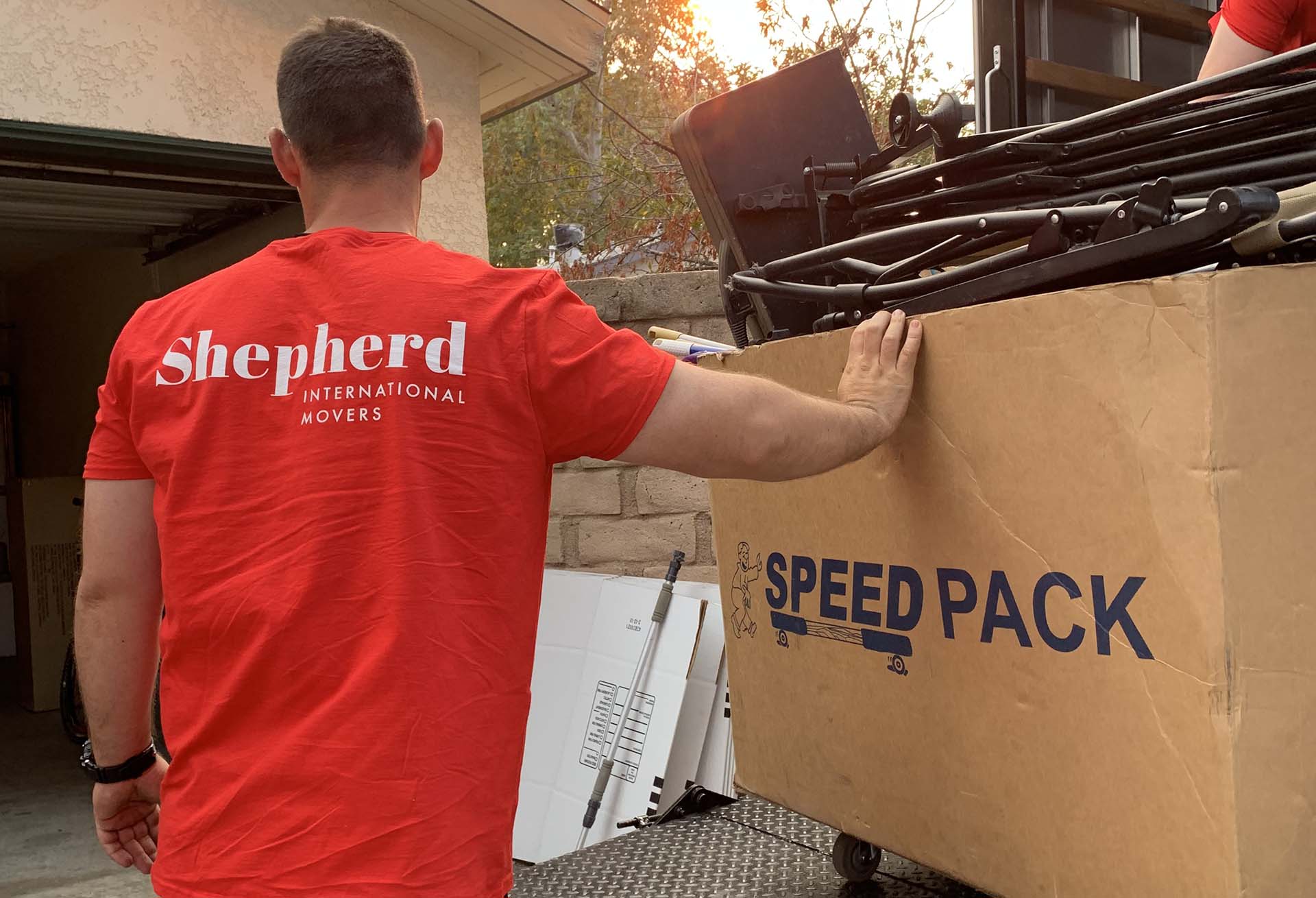

Moving to a smaller home can be a transformative experience filled with new opportunities and a fresh perspective. Downsizing to a smaller living space allows for a more simplified lifestyle. While this decision may come with its challenges, there are also many benefits of embarking on this journey, so here is everything you need to know.
How to Get Used to the Idea of Moving to a Smaller Home
Moving to a smaller house can be an adjustment, but with the right mindset and preparation, you can embrace the idea and make the transition smoother. Start by focusing on the benefits that come with downsizing, such as reduced maintenance, lower costs, and a simpler lifestyle. Take time to declutter – let go of all unnecessary possessions, keeping only those that truly bring you joy or serve a purpose.
Visualize how the smaller space can be organized and personalized to reflect your style and needs. Explore creative storage solutions and furniture that optimize the available space. Finally, remind yourself that a smaller home can foster a sense of coziness, intimacy, and a stronger connection with the things that truly matter in life. With time, you’ll find yourself getting used to the idea and even embracing the many advantages that come with it.
The Decision to Downsize When Moving Overseas
When moving overseas, the decision to downsize and embrace a more minimalist lifestyle can be a wise choice. Downsizing involves reducing the amount of belongings you bring with you to your new destination, which can have several advantages. It not only makes relocating easier but also allows you to start fresh and unburdened by excess possessions. However, it’s essential to consider both the benefits and potential challenges that come with downsizing when moving abroad.
The Benefits of Downsizing
Downsizing when moving internationally offers numerous benefits. Firstly, it reduces the cost and complexity of the relocation itself. With fewer items to transport, you can save on shipping or storage expenses. Secondly, downsizing allows you to declutter and simplify your life, shedding unnecessary possessions and embracing a more minimalist lifestyle.
This can provide a sense of liberation as you let go of material attachments and focus on what truly matters. Additionally, a smaller living space can be easier to maintain, giving you more time and freedom to explore your new surroundings and immerse yourself in the local culture.
Potential Challenges and How to Overcome Them
While downsizing can be liberating, it may also present some challenges. Letting go of sentimental items or belongings with sentimental value can be emotionally difficult. To overcome this, consider taking photographs or creating digital memories of sentimental objects before parting with them.
It’s also important to carefully assess your needs and prioritize essentials when deciding what to keep and what to let go of. Another challenge may be adjusting to a different living space, but this can be mitigated by thoughtful space planning, efficient storage solutions, and creative organization.
Finally, consider donating or selling items you no longer need, giving them a new life and reducing waste. By carefully considering the benefits of downsizing, such as cost savings, a simplified lifestyle, and easier maintenance, you can make an informed decision when relocating overseas.

Starting the Task: Moving From a Large Home to a Smaller
If you’re wondering how to start the task of moving from a large home to a smaller one, you should know that a systematic approach is key. By evaluating and decluttering your possessions, breaking down the tasks into manageable steps, and employing strategies for optimizing storage and organization, you can smoothly transition to your new space.
Evaluating and Decluttering Possessions Before the Move
The first step in relocating from a large house to a smaller one is evaluating and decluttering your possessions. Assess each item and consider its value, usefulness, and emotional attachment. Ask yourself if it truly aligns with your current lifestyle and if it will fit in your new space. Donate, sell, or discard items that no longer serve a purpose or bring you joy. This process of decluttering not only lightens your load but also helps you create a more intentional living environment where everything has a place and purpose.

Breaking Down the Process Into Manageable Steps
Breaking down the process into manageable steps makes any move easier. Create a detailed relocation plan and timeline, setting specific goals for each phase. Divide the tasks into bite-sized actions such as sorting and packing one room at a time, tackling a specific category of belongings each day, or setting aside designated decluttering sessions. By focusing on one step at a time, you can make steady progress and avoid feeling overwhelmed by the enormity of the task.
Strategies for Optimizing Storage and Organization
When relocating to a smaller place, maximizing storage and organization is key. Consider utilizing vertical space with tall shelving units or installing floating shelves. Invest in multi-functional furniture pieces with built-in storage, such as ottomans or beds with drawers. Utilize under-bed storage containers or storage bins that can slide under furniture.
Optimize closet space with hanging organizers, shoe racks, and storage bins. Additionally, employ smart organization systems such as color-coding, labeling, or using clear storage containers for easy identification of items. Watch this video if you want to learn more about color coding.
The Pros and Cons of Moving to a Smaller Home
This is a big decision that comes with its own set of pros and cons. It’s important to carefully consider both the advantages and challenges to make an informed choice that aligns with your lifestyle and needs. Here are some key points to consider.
The Advantages and Positive Aspects
There are several advantages to living in a smaller home. Firstly, it often means lower costs, including reduced mortgage or rent payments, as well as decreased utility and maintenance expenses. This can free up financial resources for other priorities or allow for a more comfortable and worry-free lifestyle.
Secondly, a smaller space requires less time and effort to clean and maintain, giving you more time to pursue hobbies, spend time with loved ones, or engage in activities you enjoy. Additionally, downsizing can lead to a simplified and clutter-free living environment, promoting a sense of calm and well-being.
The Challenges and Potential Drawbacks
While there are many positive aspects, there are also challenges associated with living in a small space. One of the main challenges is the need to downsize and potentially let go of possessions that hold sentimental value or have been accumulated over the years.
Adjusting can also require creative space planning and organization to make the most of the available area. It may take time to adjust to the new layout and find storage solutions that work for you.
Finding Balance to Make the Right Decision
Finding the right balance between the advantages and challenges is crucial when deciding to relocate. It’s essential to consider your current and future needs, your lifestyle preferences, and your long-term goals. Assess the benefits of lower costs, easier maintenance, and a simpler lifestyle against the potential drawbacks of limited space. Reflect on your priorities and what truly matters to you in terms of comfort, functionality, and personal fulfillment.
Finding the Right Smaller House
When looking for a house and deciding where to live, it’s important to take the time to find the right fit for your needs and preferences. By determining your needs, exploring different neighborhoods and locations, and working with real estate professionals, you can increase your chances of finding the perfect place that meets your requirements and brings you joy.
Determine Your Needs
Start by determining your needs and priorities in a small space. Consider factors such as the number of bedrooms and bathrooms you require, the desired square footage, and any specific features or amenities that are important to you. Assess your lifestyle and think about how the space will accommodate your daily activities and routines.
Explore Neighborhoods and Locations
Take the time to explore different neighborhoods and locations that appeal to you. Consider factors such as proximity to amenities like schools, parks, shopping centers, and healthcare facilities. Evaluate the overall vibe and character of the neighborhood to ensure it matches your lifestyle and preferences.
Research local transportation options and accessibility to major highways or public transportation if that is important to you. Visiting the neighborhoods and talking to residents can provide valuable insights into the community and help you make an informed decision.
Work With Real Estate Professionals
Enlisting the help of real estate professionals can greatly assist you in finding the right small house. Find an experienced real estate agent who specializes in the local area and has a good understanding of the market. Communicate your needs and preferences clearly, and trust their expertise and guidance throughout the process.
Real estate professionals have access to a wide range of properties and can help you navigate the buying or renting process, negotiate deals, and provide valuable advice on pricing and market trends. You can also check out some online listings on sites like Zillow.

Sorting and Decluttering: Methods for Deciding What to Keep, Donate, or Discard
Sorting and decluttering become essential tasks to make the transition smoother and create a more organized living environment. By employing effective methods for deciding what to keep, donate, or discard, you can streamline your belongings and ensure that you only bring what truly adds value and joy to your new space.
Dealing With Attachment to Belongings
One of the challenges of sorting and decluttering is dealing with attachment to belongings. Sentimental value, memories, and the belief that certain items may be useful in the future can make it difficult to let go. However, it’s important to remember that downsizing provides an opportunity for a fresh start and a more intentional lifestyle.
To navigate attachment, consider employing methods such as the KonMari method, where you assess each item based on whether it sparks joy or serves a practical purpose. Another approach is to ask yourself specific questions, such as when was the last time you used the item or if it holds strong sentimental significance. Be honest with yourself and trust your intuition when making decisions.
When dealing with sentimental items, consider taking photos or creating digital memories to preserve the emotional connection while letting go of the physical object. Additionally, if you have family or friends who might appreciate certain items, consider gifting them, knowing that the item will be cherished by someone close to you.
Practical Packing Strategies
When downsizing, practical and efficient packing strategies are crucial to make the most of limited space and ensure the safety of your belongings during transit. By following smart packing techniques, you can optimize space utilization, minimize damage, and facilitate an easier unpacking process.
To begin, gather quality packing materials such as sturdy boxes in various sizes, packing paper and tape, bubble wrap, and markers for labeling. Start packing well in advance – you don’t want to do it last minute and tackle one room at a time to maintain organization. Disassemble larger furniture whenever possible to save space and protect delicate parts.
When packing, begin with items that you don’t frequently use or seasonal belongings. Pack similar items together to make unpacking more convenient. Use appropriate cushioning materials like bubble wrap or packing paper to protect fragile items, and secure them with tape to prevent movement. Label each box clearly with its contents and the room it belongs to. This will simplify the unpacking process and allow you to prioritize essential items.

Special Considerations for Valuable or Sentimental Items
Valuable or sentimental items require special attention during packing. Consider creating a separate box or bag for these items and keep it with you during the move. This way, you can personally ensure their safety and prevent things from breaking. For delicate items such as jewelry, artwork, or fragile collectibles, use extra padding and protective materials to safeguard them during transit.
Consider insuring high-value items to provide an additional layer of protection. If you’re concerned about transporting valuable or sentimental items, hire professional movers who specialize in handling delicate or valuable possessions. They can offer expert advice, proper packing services, and even customized solutions for the safe transportation of such items. Just remember that there are certain items movers won’t move.
Remember, practical packing strategies not only ensure the safe arrival of your belongings but also make the unpacking process more efficient. By taking special consideration for valuable or sentimental items, you can give yourself peace of mind knowing that these cherished possessions are well-protected throughout the relocation process.
Discover the Joys of a Simplified Lifestyle With the Help of an International Moving Company
Relocating to a smaller home and embracing a simplified lifestyle can bring numerous joys and benefits. However, the process of preparing for a move on your own can be too demanding and cause a lot of relocation stress. So, consider hiring a reliable relocation company. With the assistance of an international moving company like Shepherd International Movers, you can have an efficient relocation. You can choose between sea freight or shipping your belongings by air. Either way, contact us and allow us to take care of your belongings while you focus on other tasks.
FAQ
How Do I Determine if Moving to a Smaller Home Is the Right Decision for Me?
To determine if this decision is right for you, assess your current space utilization, consider the financial benefits and long-term goals, and reflect on your willingness to embrace a simpler lifestyle and let go of excess belongings.
What Are Some Advantages of Downsizing to a Smaller Home?
Advantages of downsizing include lower costs, reduced maintenance, a simplified lifestyle, improved organization, and a cozier living environment that promotes comfort and contentment.
What Challenges Should I Anticipate When Moving to a Smaller Home?
Challenges of small living space include downsizing and parting with belongings, adjusting to limited space, finding storage solutions, accommodating guests, and adapting to a new living environment.
How Can I Start the Process of Moving From a Large Home to a Smaller One?
Start by evaluating belongings, decluttering, creating a timeline, hiring professionals if needed, making a plan for packing, notifying relevant parties, and transitioning smoothly to your new home.
What Should I Consider When Searching for the Right Smaller House?
Consider factors such as location, proximity to amenities, neighborhood characteristics, square footage, number of bedrooms, storage space, potential for modifications, and how well the house aligns with your lifestyle and preferences.
Are There Any Special Considerations for Downsizing and Packing My Belongings?
Special considerations include assessing sentimental and valuable items, using proper packing materials, protecting fragile possessions, and organizing belongings efficiently to optimize space.
What Are the Potential Emotional and Mental Adjustments When Moving to a Smaller Home?
Potential adjustments may include letting go of attachments to belongings, adapting to a new living environment, and embracing a more minimalist lifestyle, which can bring a sense of liberation but also require an adjustment period.
What Are Some Practical Tips for Optimizing Space in a Smaller Living Environment?
Practical relocation tips include using multifunctional furniture, utilizing vertical space, implementing smart storage solutions, organizing belongings efficiently, and decluttering regularly to maintain a streamlined living environment.
How Can I Make My New Smaller Home Feel Cozy and Welcoming?
Make your new small house cozy and welcoming by incorporating warm lighting, using comforting colors and textures, arranging furniture in a functional and inviting layout, adding personal touches, and creating designated areas for relaxation and enjoyment.
Are There Any Financial Benefits or Cost Savings Associated With Moving to a Smaller Home?
Yes, there are financial benefits such as lower mortgage or rent payments, decreased utility bills, reduced maintenance costs, and the opportunity to reallocate resources to other priorities or savings.






